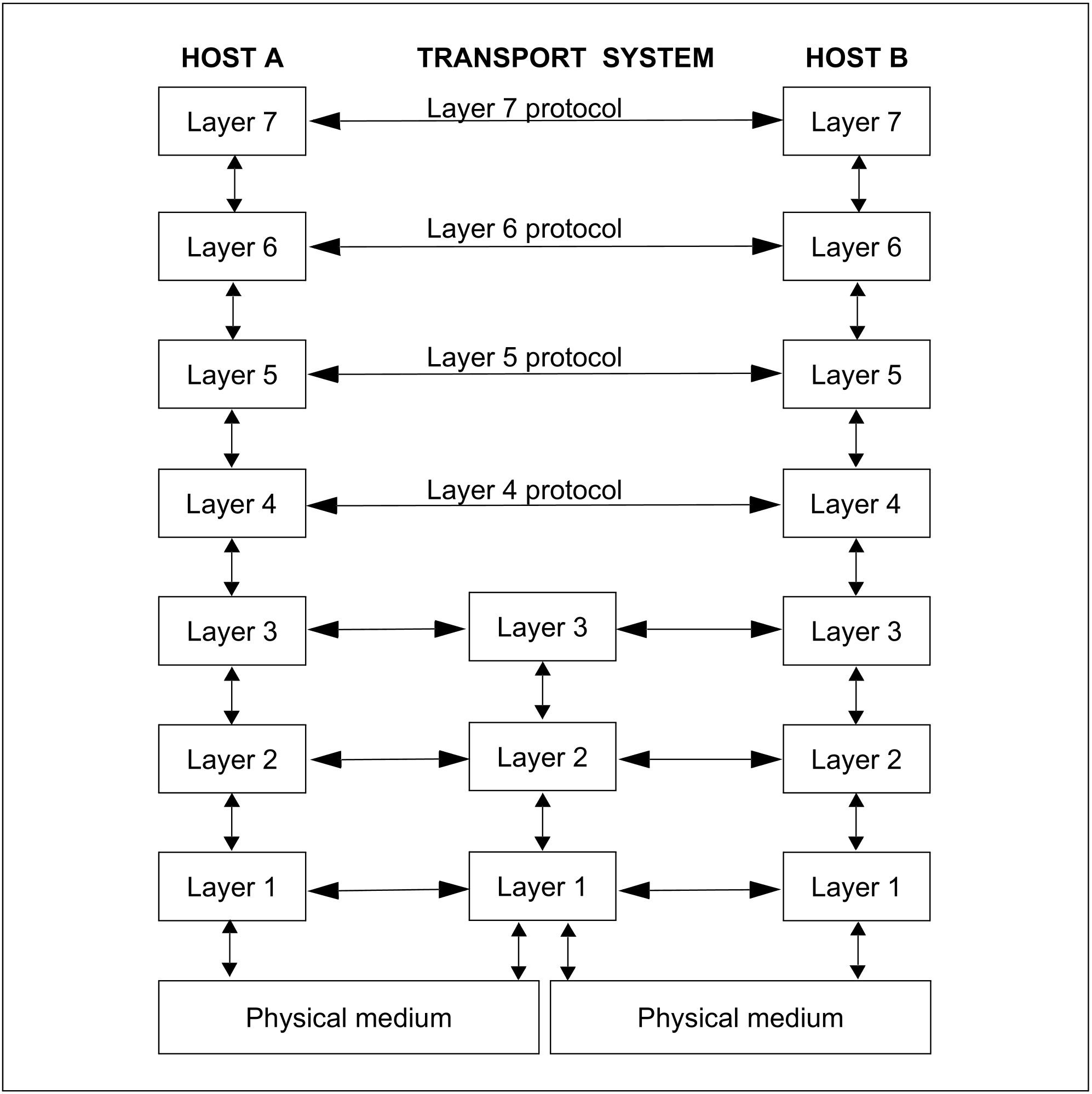The model for communication between open systems, the OSI Reference Model (Open Systems Interconnection), forms the basis for ISO standardization of data communication. The OSI model defines the structure of communication systems and serves as a basis for standardizing protocols and services. It defines the functions that must be provided by the components involved in communication.
The OSI Reference Model comprises seven hierarchical layers, where each layer is assigned specific communication functions within the communication task.
Layer | Name | Function | |
Layer 7 | Application Layer | Coordinates and controls the execution of communication functions for an application | A |
Layer 6 | Presentation Layer | Controls the presentation of information, thereby allowing user-independent and device-independent communication | |
Layer 5 | Session Layer | Controls the flow of communication | |
Layer 4 | Transport Layer | Controls the reliable exchange of data between two communicating partners (applications) | T |
Layer 3 | Network Layer | Controls the exchange of data between two end systems (computers) | |
Layer 2 | Data Link Layer | Secures transmission on the individual link sections of the overall communication path (procedures) | |
Layer 1 | Physical Layer | Sets up the physical connection (via the medium used for transmission) |
OSI reference model
Each layer makes use of the service provided by the underlying layer and offers a service to the layer above it. Only the Physical Layer needs to provide its own service in conjunction with the physical medium. The active elements within a layer that provide the functions are known as instances.
Each layer is defined by the service it provides and the protocol that uses its instances. During communication, the various computers interact on the same layer using common protocols.
Communication in the OSI Reference Model
In general, the functionality of each layer in the OSI Reference Model can be provided by various protocols. It is essential for communication that the partner instances are using the same protocol. For this purpose, profiles are defined. A profile is a precise definition of which protocol or which protocol variant is to be implemented on which layer. Profiles are defined by national or international organizations or syndicates.
OSI Layer | Function | ISO service/protocol |
Layer 7 | Application Layer | |
Layer 6 | Presentation Layer | ISO 8822 / ISO 8823 |
Layer 5 | Session Layer | ISO 8326 / ISO 8327 |
Layer 4 | Transport Layer | ISO 8072 / ISO 8073 CL.0 /2 /4 / |
Layer 3 | Network Layer | ISO 8348 / ISO 9542 * |
Layer 2 | Data Link Layer | ISO 8802/2, LLC1/2 |
Layer 1 | Physical Layer |
ISO services and protocols in the OSI architecture
The protocols marked with * are administration protocols

